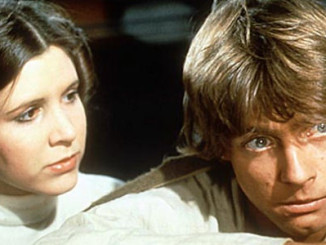 Batman: The Killing Joke is having a one-evening only theatrical release today ahead of its release on home video tomorrow.
Batman: The Killing Joke is having a one-evening only theatrical release today ahead of its release on home video tomorrow.
Over the past several years, Warner Brothers animation division have been delivering some top notch direct-to-home-video films adapting various fan favorite comic book storylines. The releases have featured some top notch voice acting and, when necessary, have altered the original stories just enough to make each release stand on its own. But one classic story seemed to have off limits to them for a long while – Alan Moore and Brian Bolland’s Batman: The Killing Joke. Well, Warners has finally gotten to the story and have reunited actors Kevin Conroy and Mark Hamill to once again give voice to Batman and his arch-nemesis, the Joker. But what seems like a can’t miss combination of talent and material ends up being a swing for the fences that barely gets the ball out of the infield.
Alan Moore’s original comic is much more a study of the dynamic between Batman and the Joker than it is an actual story. Scant little actually happens in terms of plotting. After the Joker escapes Arkham Asylum for the umpteenth time, he shots and cripples Barbara Gordon, aka Batgirl, while kidnapping Commissioner Gordon. The Joker’s plan is to drive Gordon insane through a series of funhouse torments at an abandoned amusement park. Batman pursues and catches him. The end. Beefing the story up somewhat are flashbacks to a possible origin for the Joker, but even he admits that he isn’t sure if that is what really happened to him or if it is just a product of his own dementia.
But the strength of the story lies not in its narrative heft, or lack thereof, but in how Moore handled the relationship between Batman and the Joker. Moore looked at the pair and came to a realization that he places in Batman’s mouth at the beginning of the story – sooner or later one of them will kill the other. The real story is about how Batman must find the strength to break the pair’s escalating cycle of violence. And it is from the words of his friend Jim Gordon who, after showing the strength to resist the Joker’s attempts to psychologically torture him, still demands justice not revenge on the Clown Prince of Crime.
 However, this leaves us with a surfeit of material to make a feature-length animated film. To that end, Killing Joke producer Bruce Timm and screenwriter Brian Azzarello have crafted a prologue to the story that is pretty much the first third of the film. In it we see the last case that Barbara works as a partner to Batman in her Batgirl alter-ego. And that decision to leave the costumed vigilante business follows directly from the two of them having sex on a rooftop following an argument. Understandably, there has already been an uproar in fandom over what is being seen as a gross misinterpretation of the dynamic between the two characters. (Our own Comic Book Film Editor William Gatevackes sounds off on it here.) But beyond that, this additionally story material just does not sit well with the rest of the film.
However, this leaves us with a surfeit of material to make a feature-length animated film. To that end, Killing Joke producer Bruce Timm and screenwriter Brian Azzarello have crafted a prologue to the story that is pretty much the first third of the film. In it we see the last case that Barbara works as a partner to Batman in her Batgirl alter-ego. And that decision to leave the costumed vigilante business follows directly from the two of them having sex on a rooftop following an argument. Understandably, there has already been an uproar in fandom over what is being seen as a gross misinterpretation of the dynamic between the two characters. (Our own Comic Book Film Editor William Gatevackes sounds off on it here.) But beyond that, this additionally story material just does not sit well with the rest of the film.
The prologue is pretty much a straightforward, episodic story that bares no real impact on the main plot. It does not set anything up or fill in a backstory that is needed for a deeper understanding of events in the main Killing Joke tale. The structure of The Killing Joke relies on the deft switching back and forth between the present-time story and the flashbacks to the Joker’s possible origin. To introduce this structure so far into the film feels awkward and unbalancing.
Even more egregious is the fact that the prologue pulls focus from the main event – the match-up between Batman and The Joker. Now, we don’t even get the Joker making an appearance until the film is a third of the way over. Fans know what they want out of this film and to make them wait twenty minutes or so before they start to get it is not a good way to ingratiate them.
 But once we do get to the main story, the film understandably finds its feet and that is largely due to the performances of Hamill and Conroy. The two first began voicing their characters all the way back in 1992’s groundbreaking Batman: The Animated Series and are undoubtedly the two voice actors most linked with the roles. And it is great to hear them working together again here. Hamill handles the potentially tricky moment where the Joker finally looses his grip on reality perfectly, bringing the absolute right tone to an image that has reached iconic status over the years. Conroy also brings his A-game, shading just the right amount of humanity and empathy needed for the story’s closing moments.
But once we do get to the main story, the film understandably finds its feet and that is largely due to the performances of Hamill and Conroy. The two first began voicing their characters all the way back in 1992’s groundbreaking Batman: The Animated Series and are undoubtedly the two voice actors most linked with the roles. And it is great to hear them working together again here. Hamill handles the potentially tricky moment where the Joker finally looses his grip on reality perfectly, bringing the absolute right tone to an image that has reached iconic status over the years. Conroy also brings his A-game, shading just the right amount of humanity and empathy needed for the story’s closing moments.




